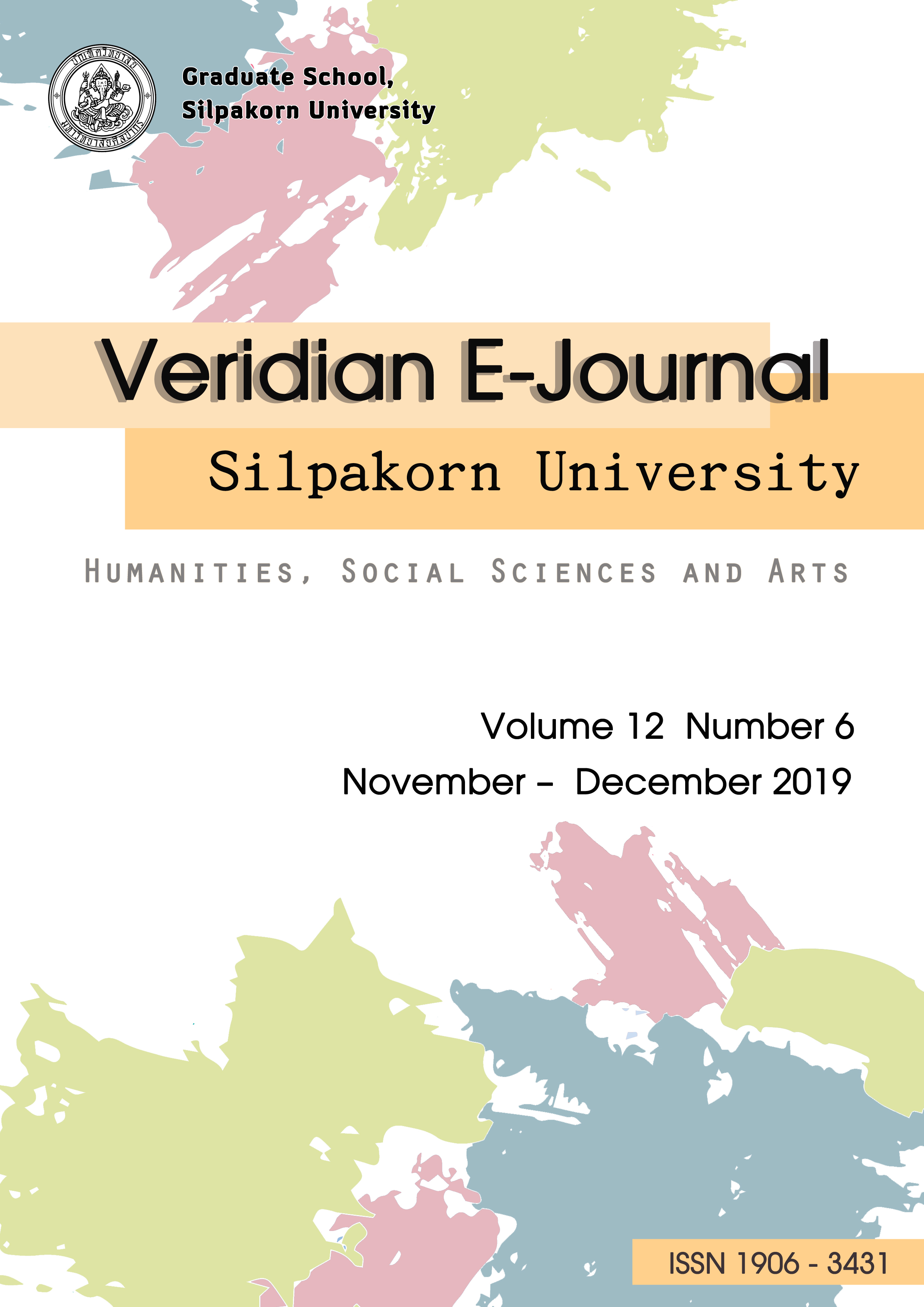การศึกษาวิธีการวาดตัวละครและการสร้างภาพต่อเนื่องในการ์ตูนภูตผีปีศาจของ ศุภมิตร จันทร์แจ่มจากเค้าโครงเรื่องของเหม เวชกร (A Study on Character Drawing and Sequential Time Frame in Supamit Chantjam (Pui Devil)’s Comic on Ham Vejakorn’s Novel)
Main Article Content
Abstract
บทความนี้มุ่งศึกษาวิธีการวาดสร้างภาพตัวละครการ์ตูนผี และ วิธีสร้างภาพต่อเนื่องลำดับเหตุการณ์การอ่านการ์ตูนของศุภมิตร จันทร์แจ่ม ตามเนื้อเรื่องสยองขวัญของเหม เวชกร ด้วยวิธีการศึกษาระดับความเหมือนจริงในการวาดแนวคอมิคส์ และ การสร้างภาพต่อเนื่องตามแนวทางของสกอตต์ แม็คคลาวด์ ผลการศึกษาพบว่า การสร้างภาพการ์ตูนนี้ เป็นการนำเนื้อหาวรรณกรรมมาดัดแปลงเป็นภาพวาดคอมิคส์ การเลือกเรื่องราว สร้างสไตล์ภาพวาดที่ถูกลดทอนความน่ากลัวในระดับหนึ่ง ด้วยวิธีการลดรายละเอียดความเหมือนจริงในตัวละครการ์ตูน จนไปถึงนำหลักการสร้างจุดเชื่อมโยงช่องภาพต่าง ๆ ศึกษาวิธีการสร้างภาพการ์ตูน ด้วยแนวความคิด และ วิธีการของสกอตต์ แม็คคลาวด์ ด้วยหลักการนี้แสดงให้เห็นว่า การ์ตูนของศุภมิตร จันทร์แจ่ม เป็นการสร้างอัตลักษณ์เฉพาะที่ใช้วิธีการลดความเหมือนจริง จนไปถึงการเปลี่ยนกิริยาท่าทางตรงข้ามของตัวละครที่ทำให้ดูตลกขบขัน สร้างความสนุกสนาน และ ความน่ารัก การสร้างจุดเชื่อมโยงภาพที่ทำให้เรื่องราวไหลลื่นสบายตา กลายเป็นองค์ความรู้ของการวาดการ์ตูนแนวคอมิคส์(Comics)ที่เกิดขึ้นในศิลปะร่วมสมัยของไทย และการสร้างสรรค์คู่ตรงข้ามในภาพลักษณ์
This article aims to investigate ghost character drawing and sequential time frame ordering in Supamit Chanjam’s comics from Hem Vejakorn’s horror novel. By adopting Scott McCloud’s concept, the realistic level of drawn pictures and sequential time frame are explored. Although the comics are adapted from the horror novel’s story, the horrors in the selected part of the story, and also in visual style, are both reduced by dropping some realistic details in the drawn characters. This article also studies elements of visual communication in the comics. The study explains that Supamit Chanjam constructs his own comic identity by reducing some realistic elements and changing some characters’ gestures. The gestures are changed to be incompatible and funny. This technique makes amusement and loveliness in the comics. Furthermore, the frames are linked to help the reader to read the comics easily. These mediums become knowledges of comic drawing techniques in contemporary Thai visual arts, and also become creations of binary opposition in images.

